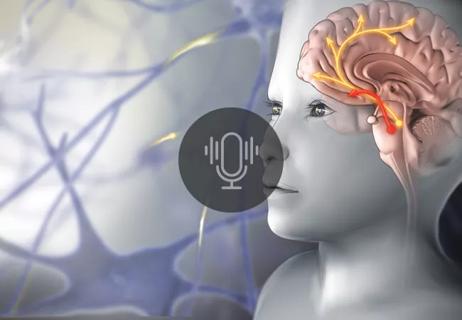Cleveland Clinic study investigated standard regimen

In the largest study of its kind to date, chronic pain patients at Cleveland Clinic’s Center for Comprehensive Pain Recovery (CCPR) program reported improvements in some symptoms after participating in a five-day, low-dose ketamine regimen.
Advertisement
Cleveland Clinic is a non-profit academic medical center. Advertising on our site helps support our mission. We do not endorse non-Cleveland Clinic products or services. Policy
No adverse effects were reported in the study, in which 1,034 people received treatment between May 2021 and October 2024. The research was published recently in Regional Anesthesia & Pain Medicine.
The researchers hope to help contribute data that may help low-dose infusions be more widely accepted as a safe tool for those who haven’t found relief with other methods.
“It's such a straightforward protocol,” says Pavan Tankha, DO, a Cleveland Clinic anesthesiologist and pain medicine specialist. “With half a milligram of ketamine per kilogram of body weight, infused over 40 minutes five days in a row, we see a number of patients benefit. And it’s very well tolerated.”
Chronic pain affects as many as one in five adults in the United States. Many people are helped by multidisciplinary care that includes standard treatments such as over-the-counter and prescription pain medications, physical and behavioral therapy, interventional procedures and lifestyle modifications.
For people who haven’t found sufficient relief through those measures, however, and have been suffering for six months or more, alternative therapies may be appropriate.
Ketamine is known to provide pain relief, and is prescribed off-label as a third- or fourth-line treatment for those with refractory pain, but widespread adoption has been hindered by lack of protocol standards and by safety concerns influenced by many factors, including ketamine’s reputation as a dangerous recreational drug. These hindrances have limited the availability to attain real-world safety and efficacy data.
Advertisement
In 2021, Cleveland Clinic’s Comprehensive Pain Recovery center began prescribing a limited number of low-dose ketamine infusions to some patients as part of multidisciplinary treatment. As positive responses accumulated, the program expanded, and today the center delivers more than 50 infusions five days a week.
Anesthesiologists and psychiatrists prescribe the ketamine at an outpatient infusion center, using the pain clinic’s standardized protocol: 0.5 mg/kg infused over 40 min for five consecutive days. Nurses experienced in managing ketamine patients staff at a 1:2 nurse-to-patient ratio. They also administer 8 mg ondansetron intravenously for nausea prevention, and may add another dose if needed.
“Because ketamine has not been approved for chronic refractory pain by the FDA, we're using it when other treatment has failed,” says Dr. Tankha. “The patients who have historically been referred to our program are exactly those patients. They have exhausted everything else. And so they are almost immediately good candidates for ketamine.”
For clinicians and patients in the program, quality of life improvement is a significant goal.
“Pain is what you feel, but it's also what it does to you,” says Dr. Tankha. “This department focuses on the does-to-you component. How do we reduce suffering? How do we get you better quality of life? But we can do a little bit of both — address the pain itself and reduce suffering.”
Unlike opioids, ketamine can improve a patient’s experience of pain and pain-associated distress. It has been associated with side effects such as nausea and hallucinations, but these can be mitigated, Dr. Tankha says, and are shown to be minimal in low-dose infusions.
Advertisement
Anesthetic doses of ketamine have a number of contraindications, but subanesthetic doses have few.
“With subanesthetic doses, the only absolute contraindication is pregnancy,” Dr. Tankha says. “We haven’t had this situation, but I would probably draw the line for someone with a history of ketamine abuse or addiction. But everything else we can work around. If a patient has a history of schizophrenia or is in liver failure, or if they are in heart failure, we will still consider them for low-dose ketamine.”
Cleveland Clinic’s retrospective study tracked infusion attendance to confirm treatment completion. Safety was assessed through adverse events requiring discontinuation of infusions and/or an emergency medical response for abnormal ECG findings, symptomatic hypertension or hypotension. Manageable side effects such as dizziness, nausea and hallucinations were not tracked as adverse events.
Baseline measures included pain interference, global physical health, fatigue, physical function and depression.
The primary effectiveness outcome was minimal clinically important difference in Patient-Reported Outcomes Measurement Information System (PROMIS) scales. Participants also completed Patient Health Questionnaire-9 depression screening; Generalized Anxiety Disorder-7 anxiety screening; and the Pain Catastrophizing Scale assessment for maladaptive cognitive and emotional responses to pain.
Of 1,034 patients, 890 (86.1 percent) completed at least five infusions.
From baseline to last infusion, 20.3% to 46.4% of patients experienced clinically meaningful improvement on patient reported outcomes; those proportions held steady at three- and six-month follow-ups.
Advertisement
Statistically significant mean improvements occurred across multiple outcome domains, but the majority of individual outcomes did not reach clinically meaningful thresholds. Patients demonstrated significant mean improvements in fatigue, pain interference, and social role satisfaction. Improvements in depression, social role satisfaction, pain interference, self-efficacy, global health and pain catastrophizing were maintained at six months post-treatment.
Hallie Tankha, PhD, a Cleveland Clinic psychologist and first author on the study, notes that, “While we observed statistically significant improvements across multiple outcomes, clinicians should note that most individual patients didn't reach clinically meaningful improvement thresholds on all measures. That being said, 46% achieved meaningful improvement in pain catastrophizing, a strong predictor of pain treatment response. The high completion rate and excellent safety profile demonstrate both feasibility and patient acceptance.”
Because the study was not a randomized controlled trial, she adds, placebo effects can’t be ruled out. The team hopes to soon run a placebo trial across multiple healthcare systems.
“Importantly, we did not restrict off-protocol care, meaning patients could engage in other treatments both within our department, such as physical therapy, pain psychology, and outside, including chiropractic care or massage,” she adds. “This makes it difficult to isolate ketamine's independent effects, but it also more accurately reflects how patients actually receive care in our healthcare system.
Advertisement
“Our real-world pragmatic design offers unique value, as it reflects actual clinical practice in a high-volume setting,” she adds.
One notable characteristic of ketamine’s pain-relieving quality is that the mechanism remains a mystery.
“Ketamine is an NMDA receptor antagonist,” says Dr. (Pavan) Tankha. “When I began looking into that specific receptor, though, I realized it's not only in the spinal cord, it's all over the brain. A lot of those different areas are also responsible for pain and emotion.
“One of the best lines I read in a research paper was looking at ketamine itself. And it started off with ketamine is a promiscuous molecule. It binds to every receptor it comes across, and it turns out that's true,” he says. “Not only does it bind to NMDA, sodium channels, potassium channels and voltage-gated calcium channels everywhere in the brain, it is also associated with pain and mood. So when people ask, ‘How does it work?,’ I tell them you can't even begin to draw lines. It's just a scribble.”
Apart from questions about ketamine’s mechanism of action, Dr. Tankha says the research team has more to learn from their dataset that may help improve clinical care.
“Occasionally, a patient may miss a day of ketamine,” he says. “So one of the questions we want to answer is whether a four-day infusion provides similar benefits to a five-day infusion. And does a longer, one-day infusion provide comparable benefit to a five-day infusion?”
Their ultimate goal, he says, is to conduct prospective, blinded trials that can provide answers necessary to persuade insurers they should cover ketamine infusions for patients with refractory pain conditions.
He has seen the treatments change lives for the better.
“If you or a loved one has had pain for a year, or for decades, and nothing has worked, and I'm able to decrease the pain, decrease the fatigue, decrease the suffering 20% or 40%,” he says, “that's a home run.”
Advertisement

Researchers seek solutions to siloed care, missed diagnoses and limited access to trauma-informed therapies

Researchers identify the neurologic evolution of pain-related learning

Tapping into motivational interviewing to guide behavioral change

Self-efficacy mindset, burst therapy and increased biofeedback may help improve outcomes

How functional restoration can help children with these conditions marked by unexplained pain with stigmatized symptoms

Two-hour training helps patients expand skills that return a sense of control

National Institutes of Health grant supports Cleveland Clinic study of first mechanism-guided therapy for CRPS

New technologies and tools offer hope for fuller understanding